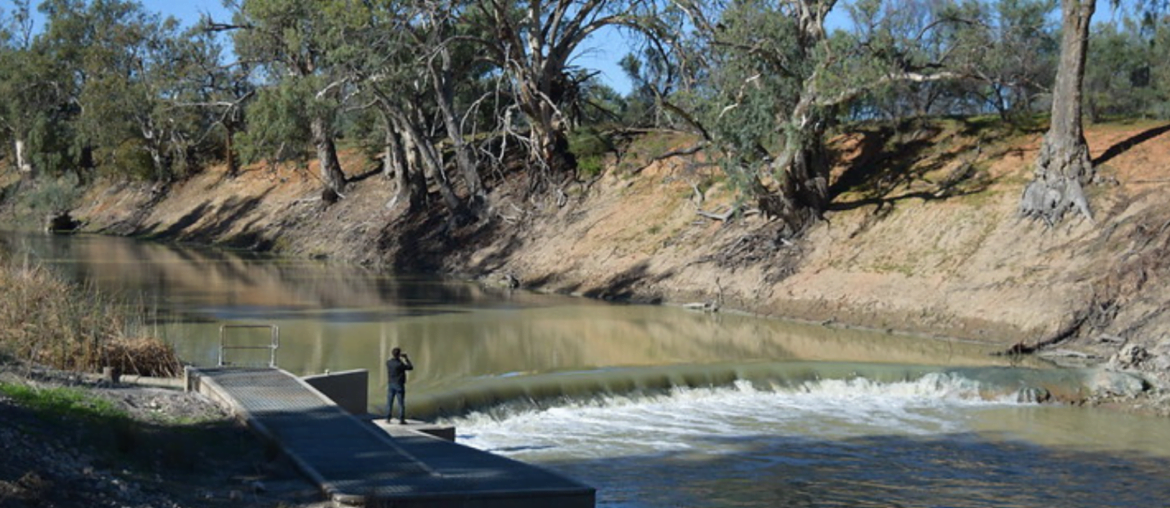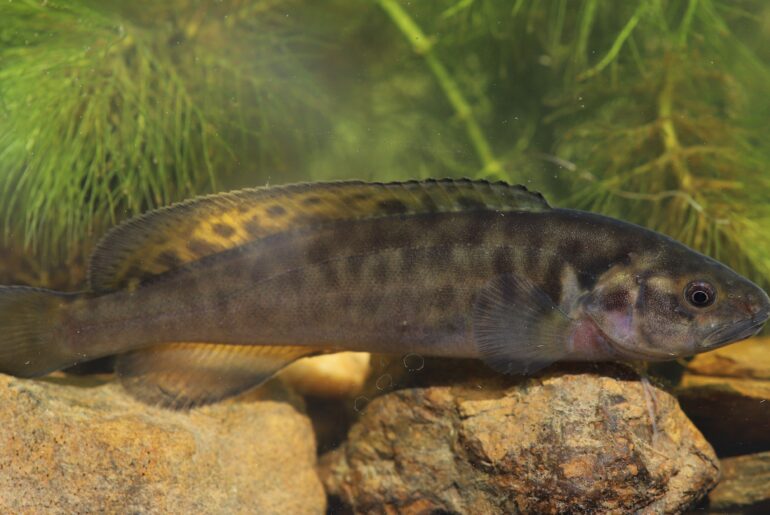Understanding why, how and when animals move is important for the conservation of different species. In highly modified landscapes, the inclusion of movement ecology can improve the likelihood that conservation and restoration practices promote the resilience of native species. In the case of freshwater fish, they must move regularly within human-modified river systems to feed and spawn, making them the perfect case study. The importance of linking movement ecology to conservation and management approaches is crucial when considering the scale of human-caused disruption to freshwater systems.

In a case study capturing eight years of Murray cod (Maccullochella peelii) data in a highly modified floodplain environment, researchers from the DELWP’s Arthur Rylah Institute for Environmental Research and the Mallee Catchment Management Authority describe movement behaviour of adult Murray cod within the Lindsay Island anabranch system in north-western Victoria. Researchers explore the conditions associated with this movement and assess how a new regulating structure has been managed to influence movement behaviour. Interestingly, during the study a hypoxic black water event occurred, dramatically lowering dissolved oxygen levels which has lethal impacts for fish including Murray cod.
Murray cod left the study area either immediately before, or during the early stages of the hypoxic event, with many returning to the study area over the following years. This movement demonstrated their recovery after disturbance and a potential avenue for resilience.

Over the course of 8 years, researchers found that eighty-nine percent of tagged fish undertook movements outside the zone they were released. Many of the movements among zones encompassed transitions within and between anabranches and the Murray River main channel. Murray cod were detected occupying all reaches in the study area (including Potter walkagee Creek during high flows) and displayed a high degree of spatio-temporal variability, both among and within years.
“Our long-term study of Murray cod movement throughout a regulated lowland river reach has shown that:
(1) the patterns of Murray cod movement observed in the highly regulated system are broadly similar to previous work in reaches with higher water velocity;
(2) the likelihood of Murray cod moving to the anabranch system from the Murray River has reduced substantially since construction of the new regulator, but the likelihood of fish moving in the other direction (i.e., to river) has remained unchanged;
(3) that flows delivered through the anabranch in accordance with our recommendations (time-of-year and magnitude of flows) increased the movement of adult fish within and between habitats; and,
(4) Murray cod movement increased dramatically prior to and during a hypoxic blackwater event. The hypoxic event resulted in high mortality but an equal proportion of fish migrated downstream into the Murray River and returned to repopulate the system over an extended time period.”
Results were consistent with previous findings, demonstrating the Murray Cod’s relatively sedentary behaviour, yet their tendency to increase movement during spawning seasons. For Murray cod, there was an increase in fish movement and distance travelled associated with increased river discharge which is similar to other riverine fish. The reasoning for Murray cod movement is a possible adaptation to allow them to access ‘preferred lotic and structural spawning habitats’.

Stream barriers such as weirs, pipes, fords, dams, culverts and other infrastructure threaten fish connectivity and access to habitat. In the Murray Darling Basin, these barriers present a considerable risk to native fish populations (Koehn et al., 2014). During the course of this study, a new weir regulator structure was installed to replace an old road crossing. The study found no significant change in fish movement upstream (due to a vertical slot fishway), however, downstream movement from the Murray to the Mullaroo Creek was reduced. The fish are now competing against a concrete barrier where movement is impeded. The fish seem to be struggling to find the 60 cm upstream opening of the fishway, highlighting one of the possible reasons for fish movement into the anabranch system. The disruption to flows caused by the construction of the regulator is a potential reason for the reduction of fish movement. The data found that available habitat was positively associated with increased discharge or Lock 7 weir pool height, though increasing weir pool height in the Murray River, rather than discharge, showed the best support for increasing fish movement between zones.
So what does this mean for flow management?
- Disturbance and habitat modification can alter movement behaviour, leading to negative impacts on species fitness, survival, and population viability (Doherty et al., 2021).
- It is important to understand (1) movement behaviour (i.e., when and why do fishes move, what cues trigger movement) and (2) how anthropogenic disturbances to streams effect movement behaviour. Addressing these queries can help mitigate the impacts of disturbances on movement in other aquatic and terrestrial ecosystems
- Research can inform how flows and barriers are managed in a modified lowland river system to achieve ecological outcomes.
- Using animal behaviour as a tool to help assess responses to management actions is often overlooked yet can provide vital insights.
This work was funded by The Mallee Catchment Management Authority through The Living Murray program. The Living Murray is a joint initiative funded by the New South Wales, Victorian, South Australian and Commonwealth Governments, coordinated by the Murray-Darling Basin Authority.
Main photo: Burtundy weir on the Darling River.
Source: Office of Environment and Heritage.




